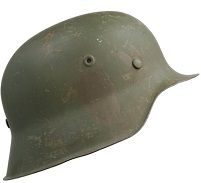Article
Were the Nazis Certifiably Insane? Psychiatrists Look Back
Author(s):
The Nazi criminals' crimes against humanity continue to stun psychiatrists. Was there a neurological defect involved?

It was a peculiar beginning to what became a singular quest.
Joel Dismdale, MD, said he was working late in his office at Massachusetts General Hospital when a stranger appeared at the door.
“I am the executioner and I have come for you,” Dimsdale said the man told him.
The visitor carried what Dimsdale said he thought at the time might have been a gun case.
But when he opened it, it had files of documents. The man said he had indeed been an executioner—a hangman who executed Nazi war criminals convicted at the Nuremberg trials.
Knowing that Dimsdale was a psychiatrist with an interest in forensics, the man asked Dimsdale to do a forensic autopsy on the convicted Nazis. "You need to study these men," Dimsale said the visitor told him.
“He told me he enjoyed hanging them” Dimsdale told his audience at the American Psychiatric Association’s annual meeting in Atlanta, GA, “He said ‘They were scum’.”
The burning question for the executioner, one that still seems to go unanswered, was “Were they criminally insane?”
Dimsdale, who went on to write a book about his research into the Nuremberg defendants, decided to try to find out. He soon learned he was far from the first psychiatrist to do so.
In a fascinating session that drew a standing room crowd and lasted for several hours, Dimsdale recounted a bit of history.
By searching archives and individual troves of letters and documents throughout the US and abroad, Dimsdale learned everything he could about the defendants and how psychiatrists saw them at the time. He soon discovered that two US psychiatrists in 1945 were in charge of determining whether the accused criminals were insane.
The idea was to see what led to this “new level of barbarity” in the Nazis' extermination of Jews and other groups—including babies and children with disabilities.
There was pressure to use the defendants for scientific research immediately and to “execute them by shooting them in the chest and then studying their brains,” Dimsdale recounted.
The less direct approach was to give them all long interview sessions with psychiatrists, and a battery of psychological tests, including intelligence tests and the then-popular Rorschach ink blot tests.
The psychiatrists in charge, both from Columbia College of Physicians and Surgeons in New York City were Douglas Kelley, MD, and Gustave Gilbert, PhD. They did uncover some mental pathology, Dimsdale said. For instance, Rudolf Hess was delusional, and Julius Streicher, a newspaper publisher and rabid anti-semite, had a thing for violent pornography, Dimsdale said.
Another, Robert Ley, had signs of degenerative brain disease from a traumatic injury—found in a dissection of his brain after he hanged himself before the trial.
But all were different.
“They were a heterogeneous group,” he said.
At one point, studying the results of the accused criminals' Rorschach tests, the psychiatrists thought they had found some common Nazi traits in their interpretations of the ink blots. Perhaps the tests would be useful in predicting future criminals, they thought.
Then a disbeliever named Molly Harrower gave the tests to two control groups—including a cohort made up of Unitarian ministers.
When experts were given those results mixed in with those of the Nazis for interpretation, it became clear either the tests were useless or the Nazis had no distinct pathology.
The search for a single, diagnosable, certifiable neurological defect that could have turned these men into monsters turned up nothing, Dimsdale said.




